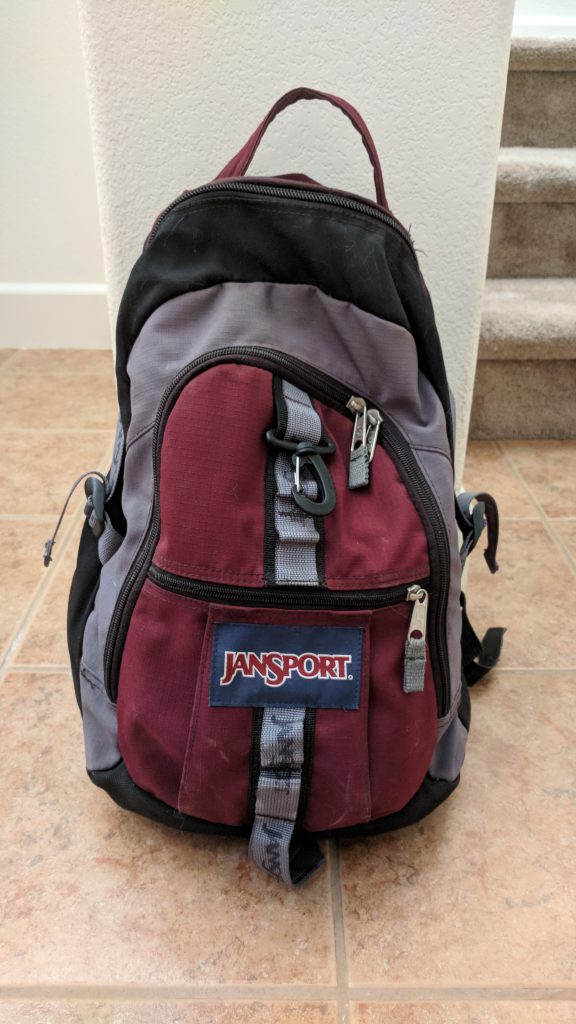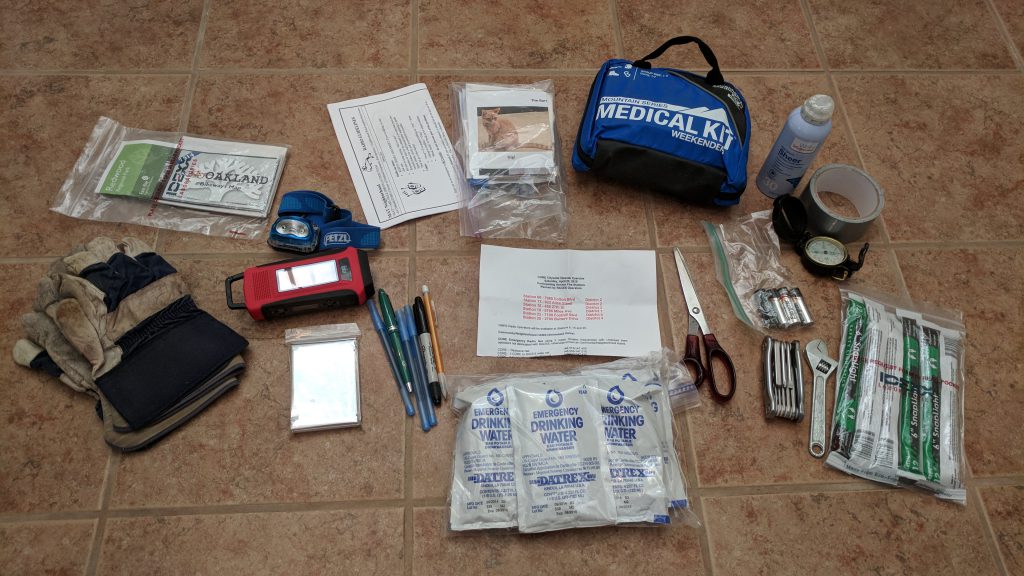This article is one of a series of posts that emerged due to the 2017 wildfires that ravaged California wine country near our home.
A Go Bag (also known as a bug out bag) is one of the primary tools for emergency preparedness. In a nutshell, a go bag is a prepared container that already includes everything a person or group of people would need to survive for a few days in the event of an emergency.
The details about what such a tool should contain is personal, but some items commonly included in descriptions of go bags are:
 Water
Water- Non-perishable Food
- Whistle to call for help
- Flashlight
- N95 Dust Mask
- Pocket Knife
- First Aid Kit
- Battery operated radio
- Crank power charger
- Emergency cash
- Fire starter
- Duct Tape
- Emergency Blanket
Many companies produce ready to use go bags that you can buy if you do not want to take the time and effort to create your own. A few available on Amazon include:
- Ready America 70385 Deluxe Emergency Kit 4 Person Backpack
- Safe-T-Proof 2 Person/3 Day Grab and Go BackPack Emergency Survival Kit
- Tactical 365 Operation First Response Stage One 3 Day 1 Person Bug Out Survival Bag
We were never sure about some of the compromises inherent in some of the premade bags. In particular, any food contained in the bags were likely not to be gluten free. So we decided to create our own. Here’s what our go bag looks like from the outside. It’s just an older, unused day hike pack that we re-purposed for emergency preparedness.

And here are the contents spread about. This was part of our exercise to determine what needs to stay in the bag and what needed to be changed:
Here’s the list of items I inventoried:
- Water
- Gloves
- Emergency Radio/Charger
- Copies of drivers licenses, insurance cards and contact info
- Mylar Blanket
- Pens, Pencils, Sharpie and Notepads
- Maps
- Headlamp
- Snap lights
- First Aid Kit
- Sunscreen
- Tools
- Batteries
- Duct Tape
- Compass
- Trash bag, tissue
See any possible issues with our go bag? You should. Some expired food we found during the fire had already been thrown out. So that’s missing from the photo above. That an a few other issues I’ll discuss in an upcoming post about checking and updating a go bag on a regular basis.
An important feature of a go bag is its readiness to be picked up and taken at a moment’s notice. This implies two things. First, it should be complete and ready to go. There may not be enough time to gather up components when evacuation is warranted. During the recent wildfires some residents had minutes to leave their homes before they were engulfed in flames.
Secondly, the go bag should be in an easily accessible location. Deep in the back of a rarely used closet is not a good place for an item you have to grab immediately during an emergency. Our go bag visibly sits in the main coat closet near our front door.
So, were we prepared? Yes and no. A follow up post will go over some of the issues with our go bag, some of which we’ve already hinted at.


Pingback: Emergency Lessons Learned | Robert Barron
Pingback: Emergency Lessons – Review Your Go Bag | Robert Barron
Pingback: Emergency Lessons – Segregate Important Documents | Robert Barron
Pingback: Emergency Lessons – Scan All Family Photos | Robert Barron